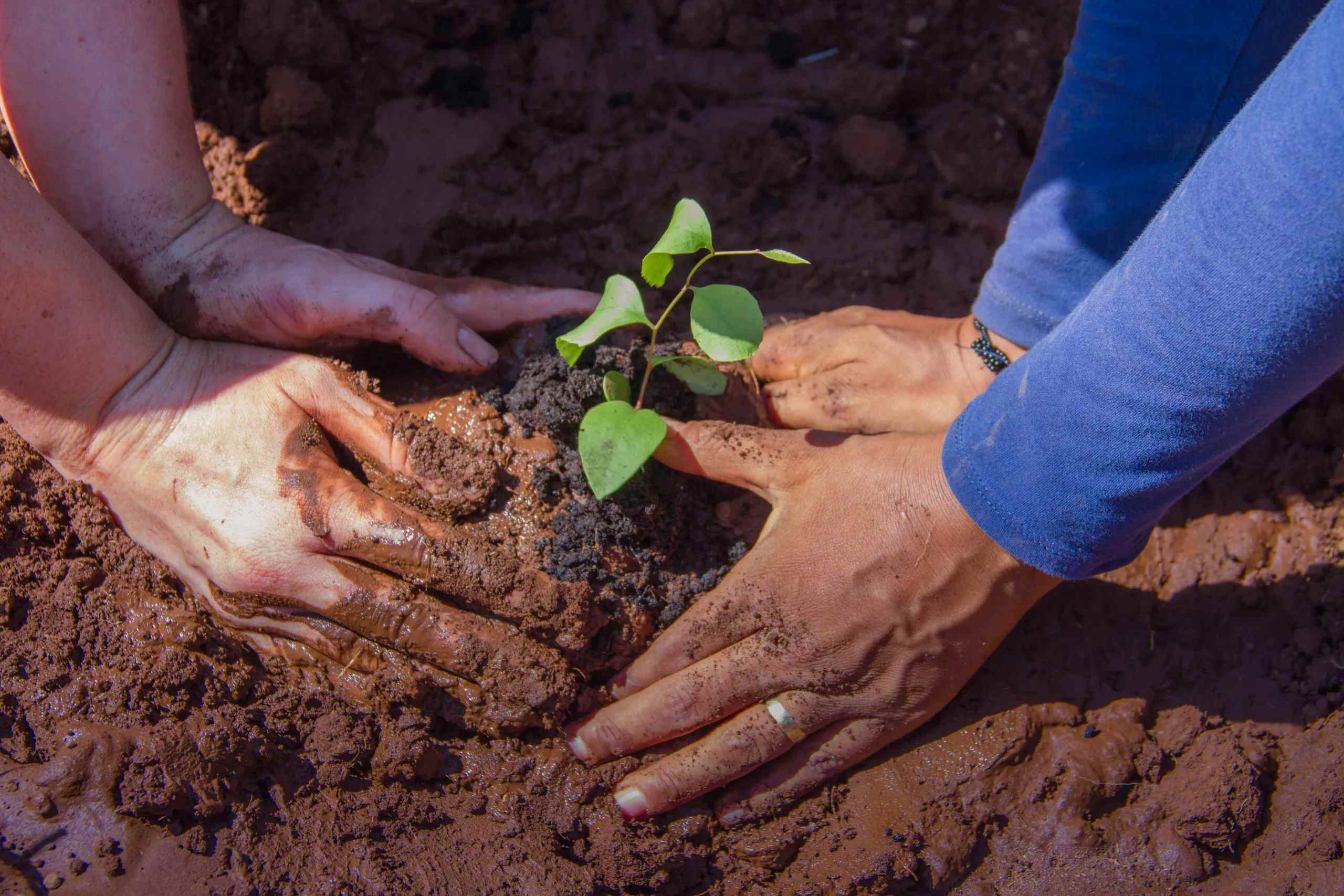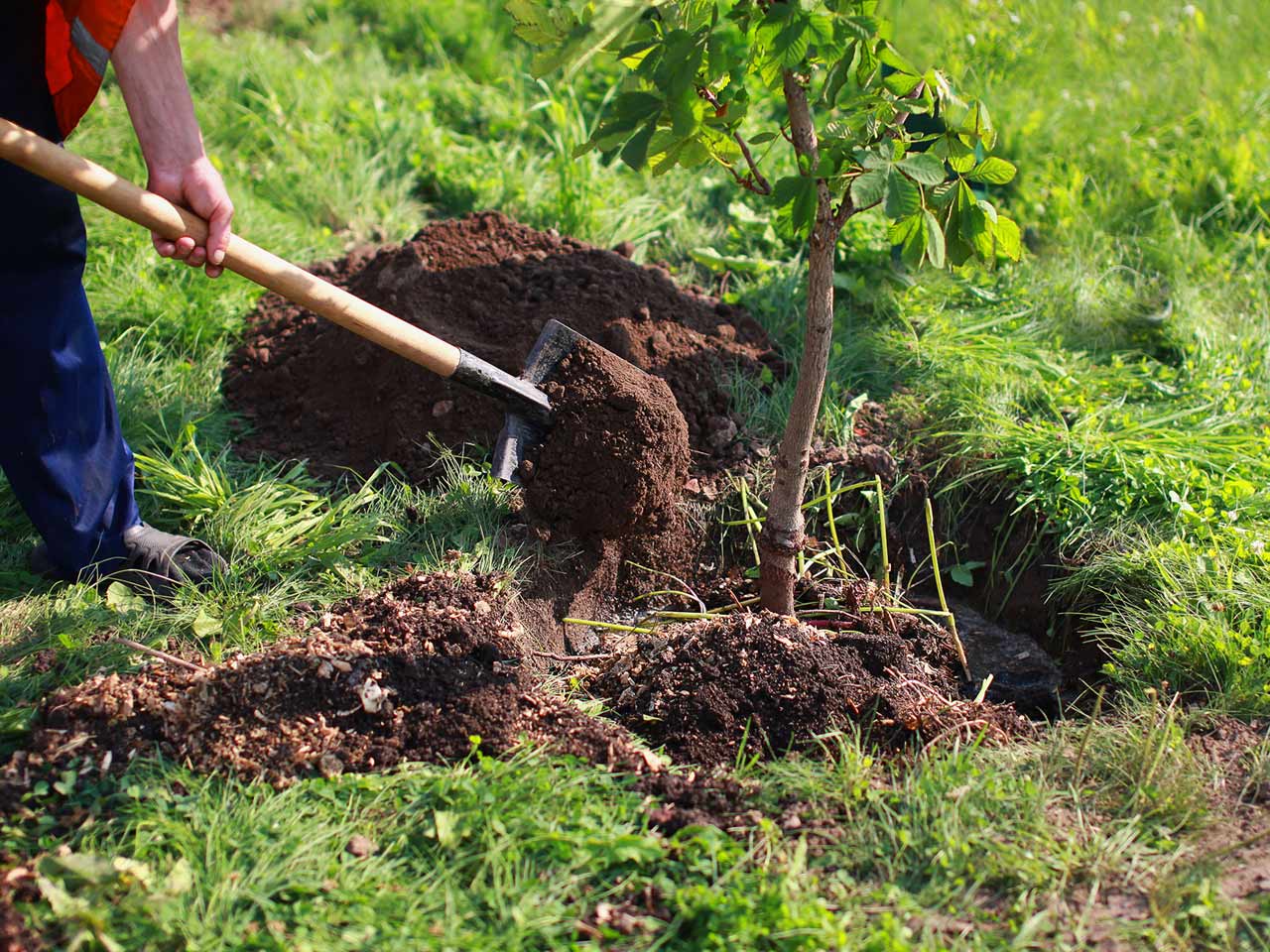Home>Gardening Tips and Tricks>Eco-Friendly Gardening>How Close To Plant Trees In Permaculture


Eco-Friendly Gardening
How Close To Plant Trees In Permaculture
Published: February 16, 2024
Learn the best practices for planting trees in permaculture to create an eco-friendly garden. Discover how close to plant trees for optimal growth and sustainability.
(Many of the links in this article redirect to a specific reviewed product. Your purchase of these products through affiliate links helps to generate commission for Chicagolandgardening.com, at no extra cost. Learn more)
Table of Contents
Introduction
Understanding the Role of Tree Placement in Permaculture
Permaculture, a sustainable and eco-friendly approach to gardening, is gaining widespread recognition for its emphasis on harmonious relationships between natural elements. At the heart of permaculture lies the strategic placement of trees, which serves as a fundamental aspect of this holistic gardening philosophy. By carefully considering the proximity and arrangement of trees within a permaculture system, gardeners can optimize the overall ecosystem, fostering a thriving environment for plants, wildlife, and humans alike.
In the realm of permaculture, the significance of tree placement extends far beyond mere aesthetics. It plays a pivotal role in shaping the microclimate, enhancing soil fertility, and promoting biodiversity. With a deep understanding of permaculture principles, individuals can harness the power of tree placement to create resilient, self-sustaining ecosystems that yield abundant harvests while minimizing environmental impact.
As we delve into the intricacies of tree placement in permaculture, it becomes evident that this practice is not solely about planting trees; rather, it involves a thoughtful and strategic approach to integrating trees into the broader landscape. By exploring the nuances of tree placement in permaculture, we can unlock the potential for sustainable, regenerative, and bountiful gardens that thrive in harmony with nature.
Understanding Permaculture
Permaculture, derived from the words “permanent” and “agriculture,” encapsulates a holistic approach to sustainable living and land use. It encompasses a diverse range of principles and practices that aim to mimic natural ecosystems, emphasizing the importance of thoughtful design, biodiversity, and resource efficiency. At its core, permaculture seeks to create regenerative and self-sustaining systems that harmonize with the natural world.
Central to the philosophy of permaculture is the recognition of the interconnectedness of all elements within an ecosystem. By observing and understanding the patterns and relationships present in nature, permaculture practitioners strive to design integrated systems that maximize productivity while minimizing waste and environmental impact. This approach extends beyond traditional gardening methods, encompassing areas such as architecture, energy, water management, and community development.
Permaculture principles guide individuals in creating landscapes that are not only productive but also resilient and adaptable. By harnessing natural processes and working in harmony with the land, permaculturists aim to cultivate diverse and abundant yields while fostering ecological stability. Furthermore, permaculture fosters a deep respect for the earth and its inhabitants, promoting ethical and sustainable practices that prioritize the well-being of both people and the planet.
Through the lens of permaculture, the role of trees transcends mere ornamentation or timber production. Trees are regarded as integral components of the overall ecosystem, serving as anchors for biodiversity, providers of shade and shelter, contributors to soil fertility, and allies in climate moderation. Understanding permaculture involves recognizing the multifaceted contributions of trees and leveraging their placement to optimize the health and productivity of the entire landscape.
Importance of Tree Placement in Permaculture
The strategic placement of trees within a permaculture framework holds immense significance, influencing the overall functionality and resilience of the ecosystem. Trees serve as dynamic contributors to the permaculture landscape, offering a myriad of benefits that extend beyond their physical presence. Understanding the importance of tree placement in permaculture entails recognizing the pivotal role that trees play in shaping microclimates, enhancing biodiversity, and fostering sustainable productivity.
One of the primary contributions of trees in permaculture lies in their capacity to modify microclimates. Through their canopy structure and transpiration processes, trees exert influence over temperature, humidity, and wind patterns, creating localized microclimatic conditions that can be harnessed to support diverse plant species and optimize growing conditions. Furthermore, trees provide invaluable shade, mitigating temperature extremes and reducing water evaporation, thus contributing to the conservation of moisture within the ecosystem.
Moreover, the presence of trees within a permaculture setting facilitates the establishment of diverse habitats, fostering a rich tapestry of flora and fauna. Trees act as natural hosts for beneficial insects, birds, and other wildlife, contributing to the overall balance and resilience of the ecosystem. Additionally, their root systems play a crucial role in soil structure and nutrient cycling, enhancing soil fertility and stability while mitigating erosion.
Beyond ecological contributions, trees in permaculture offer a wealth of resources, including fruits, nuts, timber, and medicinal products, enriching the productivity and self-sufficiency of the landscape. By integrating productive tree species into the design, permaculturists can harness a diverse array of yields while fostering a regenerative and sustainable environment.
Understanding the importance of tree placement in permaculture underscores the intricate web of relationships that trees facilitate within the ecosystem, shaping a resilient and productive landscape that aligns with the ethos of permaculture. By strategically situating trees within the design, individuals can harness their multifaceted benefits to create thriving, biodiverse, and sustainable ecosystems.
Factors to Consider When Planting Trees
When embarking on the endeavor of planting trees within a permaculture system, several critical factors warrant careful consideration to ensure the successful integration of trees into the landscape. By attentively addressing these factors, permaculturists can optimize the functionality and resilience of the ecosystem while harnessing the diverse benefits that trees offer.
1. Site-Specific Conditions: Before planting trees, it is essential to assess the unique characteristics of the site, including soil type, drainage patterns, sunlight exposure, and prevailing wind directions. By understanding these site-specific conditions, individuals can select tree species that are well-suited to thrive in the given environment, thereby promoting their long-term health and vitality.
2. Ecological Interactions: Consider the ecological interactions that trees will engender within the landscape. Evaluate how the presence of trees will influence neighboring plant species, wildlife habitats, and microclimatic conditions. By fostering synergistic relationships between trees and other elements of the ecosystem, permaculturists can enhance overall biodiversity and ecological resilience.
3. Functional Roles: Deliberate on the functional roles that trees will fulfill within the permaculture system. Will the trees primarily serve as fruit-bearing species, nitrogen-fixing plants, windbreaks, or support for climbing crops? By aligning the selection and placement of trees with specific functional roles, individuals can maximize the productivity and efficiency of the landscape.
4. Water Management: Assess the implications of tree placement on water dynamics within the ecosystem. Consider how the roots of trees may impact water retention, infiltration, and distribution. By strategically situating trees to complement water management strategies, permaculturists can optimize resource utilization and mitigate potential water-related challenges.
5. Long-Term Vision: Envision the long-term development and maturation of the trees within the landscape. Consider the eventual size and canopy spread of the selected tree species, ensuring that their growth patterns align with the broader design objectives and do not impede other elements of the permaculture system.
By thoughtfully addressing these factors when planting trees, permaculturists can cultivate resilient, productive, and harmonious ecosystems that embody the ethos of permaculture, fostering abundance while nurturing the natural environment.
Ideal Tree Spacing in Permaculture
Optimal tree spacing is a crucial consideration in permaculture design, influencing the overall functionality, productivity, and interrelationships within the ecosystem. The strategic arrangement of trees plays a pivotal role in maximizing their potential contributions while ensuring harmonious coexistence with other elements of the landscape. By adhering to principles of thoughtful spacing, permaculturists can orchestrate a balanced and thriving environment that embodies the essence of permaculture.
1. Canopy Development: When determining tree spacing, it is essential to consider the eventual size and canopy spread of the mature trees. By accounting for the growth characteristics of each species, individuals can allocate adequate space to accommodate the expansive canopy while preventing overcrowding and competition for light and resources.
2. Resource Utilization: Thoughtful tree spacing facilitates efficient resource utilization, particularly in the context of sunlight and water. By strategically situating trees to optimize sunlight exposure and prevent excessive shading, permaculturists can promote robust photosynthesis and plant growth. Furthermore, appropriate spacing mitigates competition for water, allowing for equitable access to this vital resource.
3. Ecological Connectivity: The spacing of trees influences ecological connectivity within the landscape, shaping corridors for wildlife movement and fostering diverse habitats. By creating interconnected patches of vegetation through strategic tree placement, permaculturists can enhance biodiversity and facilitate the natural flow of species, contributing to the overall health and resilience of the ecosystem.
4. Functional Relationships: Consider the functional relationships between trees and other elements of the permaculture system. By integrating trees at varying distances based on their intended roles, such as windbreaks, nitrogen fixers, or support for climbing plants, individuals can optimize the synergistic interactions and productivity of the entire landscape.
5. Long-Term Vision: Envision the long-term development and coalescence of trees within the landscape. By accounting for the eventual expansion of tree canopies and root systems, permaculturists can strategically space trees to accommodate their growth while preserving the integrity and functionality of the overall design.
By meticulously considering these factors and adhering to principles of ideal tree spacing, permaculturists can craft landscapes that embody resilience, productivity, and ecological harmony, reflecting the core tenets of permaculture.
Conclusion
As we navigate the intricate realm of permaculture and the strategic placement of trees within this holistic approach to gardening, we uncover a tapestry of interconnected principles that shape resilient, regenerative, and harmonious ecosystems. The profound significance of tree placement in permaculture extends far beyond the mere act of planting; it encapsulates a profound understanding of ecological dynamics, functional relationships, and long-term vision.
Through the lens of permaculture, trees emerge as dynamic contributors to the landscape, offering a wealth of benefits that transcend their physical presence. From shaping microclimates and enhancing biodiversity to providing resources and fostering ecological connectivity, trees play multifaceted roles that are integral to the vitality and sustainability of the entire ecosystem.
By delving into the factors that influence successful tree placement, permaculturists can orchestrate landscapes that embody efficiency, productivity, and ecological resilience. Thoughtful consideration of site-specific conditions, ecological interactions, functional roles, water management, and long-term vision empowers individuals to craft environments where trees thrive in harmony with the broader ecosystem.
Moreover, the ideal spacing of trees within a permaculture framework serves as a cornerstone of strategic design, influencing canopy development, resource utilization, ecological connectivity, functional relationships, and long-term sustainability. By adhering to principles of ideal tree spacing, permaculturists can orchestrate landscapes that embody resilience, productivity, and ecological harmony, reflecting the core tenets of permaculture.
In essence, the art of tree placement in permaculture transcends the act of cultivation; it embodies a profound ethos of stewardship, respect for nature, and the pursuit of regenerative abundance. By embracing the principles of permaculture and harnessing the potential of strategic tree placement, individuals can cultivate landscapes that not only yield bountiful harvests but also nurture the intricate web of life, embodying the essence of sustainable, eco-friendly gardening.


